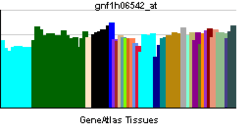FANCB
| FANCB | |||||||||||||||||
|---|---|---|---|---|---|---|---|---|---|---|---|---|---|---|---|---|---|
| Identifiers | |||||||||||||||||
| Aliases | FANCB, FA2, FAAP90, FAAP95, FAB, FACB, Fanconi anemia complementation group B | ||||||||||||||||
| External IDs | MGI: 2448558 HomoloGene: 51880 GeneCards: FANCB | ||||||||||||||||
| |||||||||||||||||
| RNA expression pattern | |||||||||||||||||
  | |||||||||||||||||
| More reference expression data | |||||||||||||||||
| Orthologs | |||||||||||||||||
| Species | Human | Mouse | |||||||||||||||
| Entrez | |||||||||||||||||
| Ensembl | |||||||||||||||||
| UniProt | |||||||||||||||||
| RefSeq (mRNA) | |||||||||||||||||
| RefSeq (protein) | |||||||||||||||||
| Location (UCSC) | Chr X: 14.84 – 14.87 Mb | Chr X: 164.98 – 165 Mb | |||||||||||||||
| PubMed search | [1] | [2] | |||||||||||||||
| Wikidata | |||||||||||||||||
| View/Edit Human | View/Edit Mouse |
Fanconi anemia group B protein is a protein that in humans is encoded by the FANCB gene.[3][4][5]
The Fanconi anemia complementation group (FANC) currently includes FANCA, FANCB, FANCC, FANCD1 (also called BRCA2), FANCD2, FANCE, FANCF, FANCG, and FANCL. Fanconi anemia is a genetically heterogeneous recessive disorder characterized by cytogenetic instability, hypersensitivity to DNA crosslinking agents, increased chromosomal breakage, and defective DNA repair. The members of the Fanconi anemia complementation group do not share sequence similarity; they are related by their assembly into a common nuclear protein complex. This gene encodes the protein for complementation group B. Alternative splicing results in two transcript variants encoding the same protein.[5]
Meiosis
FANCB mutant mice are infertile and exhibit primordial germ cell defects during embryogenesis. The germ cells and testicular size are severely compromised in FANCB mutant mice.[6] FANCB protein is essential for spermatogenesis and likely has a role in the activation of the Fanconi anemia DNA repair pathway during meiosis.[6]
References
- ↑ "Human PubMed Reference:".
- ↑ "Mouse PubMed Reference:".
- ↑ Joenje H, Oostra AB, Wijker M, di Summa FM, van Berkel CG, Rooimans MA, Ebell W, van Weel M, Pronk JC, Buchwald M, Arwert F (Nov 1997). "Evidence for at least eight Fanconi anemia genes". Am J Hum Genet. 61 (4): 940–4. doi:10.1086/514881. PMC 1715980
 . PMID 9382107.
. PMID 9382107. - ↑ Meetei AR, Levitus M, Xue Y, Medhurst AL, Zwaan M, Ling C, Rooimans MA, Bier P, Hoatlin M, Pals G, de Winter JP, Wang W, Joenje H (Oct 2004). "X-linked inheritance of Fanconi anemia complementation group B". Nat Genet. 36 (11): 1219–24. doi:10.1038/ng1458. PMID 15502827.
- 1 2 "Entrez Gene: FANCB Fanconi anemia, complementation group B".
- 1 2 Kato Y, Alavattam KG, Sin HS, Meetei AR, Pang Q, Andreassen PR, Namekawa SH (2015). "FANCB is essential in the male germline and regulates H3K9 methylation on the sex chromosomes during meiosis". Hum. Mol. Genet. 24 (18): 5234–49. doi:10.1093/hmg/ddv244. PMID 26123487.
Further reading
- Fei P, Yin J, Wang W (2006). "New advances in the DNA damage response network of Fanconi anemia and BRCA proteins. FAAP95 replaces BRCA2 as the true FANCB protein". Cell Cycle. 4 (1): 80–6. doi:10.4161/cc.4.1.1358. PMID 15611632.
- Muller YA, Ultsch MH, de Vos AM (1996). "The crystal structure of the extracellular domain of human tissue factor refined to 1.7 A resolution". J. Mol. Biol. 256 (1): 144–59. doi:10.1006/jmbi.1996.0073. PMID 8609606.
- Huang M, Syed R, Stura EA, et al. (1998). "The mechanism of an inhibitory antibody on TF-initiated blood coagulation revealed by the crystal structures of human tissue factor, Fab 5G9 and TF.G9 complex". J. Mol. Biol. 275 (5): 873–94. doi:10.1006/jmbi.1997.1512. PMID 9480775.
- Presta L, Sims P, Meng YG, et al. (2001). "Generation of a humanized, high affinity anti-tissue factor antibody for use as a novel antithrombotic therapeutic". Thromb. Haemost. 85 (3): 379–89. PMID 11307801.
- Faelber K, Kirchhofer D, Presta L, et al. (2001). "The 1.85 A resolution crystal structures of tissue factor in complex with humanized Fab D3h44 and of free humanized Fab D3h44: revisiting the solvation of antigen combining sites". J. Mol. Biol. 313 (1): 83–97. doi:10.1006/jmbi.2001.5036. PMID 11601848.
- Strausberg RL, Feingold EA, Grouse LH, et al. (2003). "Generation and initial analysis of more than 15,000 full-length human and mouse cDNA sequences". Proc. Natl. Acad. Sci. U.S.A. 99 (26): 16899–903. doi:10.1073/pnas.242603899. PMC 139241
 . PMID 12477932.
. PMID 12477932. - Ota T, Suzuki Y, Nishikawa T, et al. (2004). "Complete sequencing and characterization of 21,243 full-length human cDNAs". Nat. Genet. 36 (1): 40–5. doi:10.1038/ng1285. PMID 14702039.
- Suzuki Y, Yamashita R, Shirota M, et al. (2004). "Sequence Comparison of Human and Mouse Genes Reveals a Homologous Block Structure in the Promoter Regions". Genome Res. 14 (9): 1711–8. doi:10.1101/gr.2435604. PMC 515316
 . PMID 15342556.
. PMID 15342556. - Gerhard DS, Wagner L, Feingold EA, et al. (2004). "The Status, Quality, and Expansion of the NIH Full-Length cDNA Project: The Mammalian Gene Collection (MGC)". Genome Res. 14 (10B): 2121–7. doi:10.1101/gr.2596504. PMC 528928
 . PMID 15489334.
. PMID 15489334. - Meetei AR, Medhurst AL, Ling C, et al. (2005). "A Human Orthologue of Archaeal DNA Repair Protein Hef is Defective in Fanconi Anemia Complementation Group M". Nat. Genet. 37 (9): 958–63. doi:10.1038/ng1626. PMC 2704909
 . PMID 16116422.
. PMID 16116422. - Holden ST, Cox JJ, Kesterton I, et al. (2007). "Fanconi anaemia complementation group B presenting as X linked VACTERL with hydrocephalus syndrome". J. Med. Genet. 43 (9): 750–4. doi:10.1136/jmg.2006.041673. PMC 2564576
 . PMID 16679491.
. PMID 16679491. - Nomura Y, Adachi N, Koyama H (2007). "Human Mus81 and FANCB independently contribute to repair of DNA damage during replication". Genes Cells. 12 (10): 1111–22. doi:10.1111/j.1365-2443.2007.01124.x. PMID 17903171.